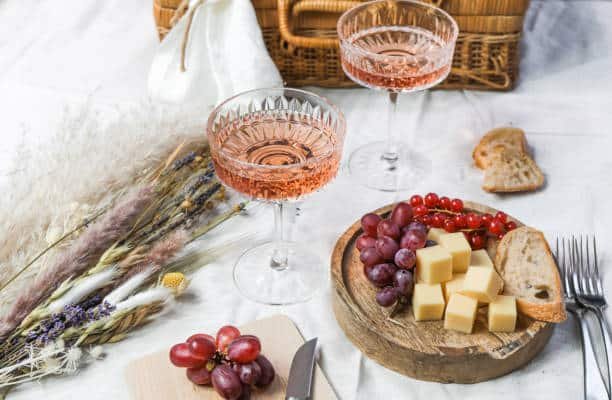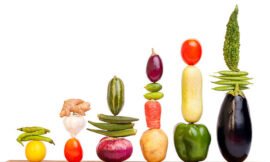Information about Zinfandel Varieties.
Zinfandel is an assertive wine that has a brambly hedge feel that remains after it has been consumed. Its presence is not one that can be ignored.
The grape, which is cultivated in large quantities in both California and Southern Italy, may be used to produce a full-bodied red wine or an off-dry rosé that is characterized by flavors of sweet strawberry.
If you’ve only ever experienced the latter, your best bet is to locate a decent bottle of full-bodied, dry zinfandel to sample if you want to get a sense of the grape’s abundant complexity.
Characteristic Flavor Notes and Profile of Zinfandel Wine
Zinfandel is a kind of red wine that is deep in color, full-bodied, and dry. It has medium-to-high levels of acidity and comparable tannins. The fruit notes in zinfandel begin in the red spectrum and progress into more black fruit tastes as the berries age.
These black fruit flavors include plum, black cherry, blackberry, and spice. Zinfandel is full-bodied and has a high alcohol content. The tastes of the fruit are quite robust and opulent, and they have a jammy quality.
The delicate flavors of star anise, black pepper, and licorice complement the juicy fig and brambly fruit that are present in this wine. It smells strongly like blackberries, black plums, and raisins all at the same time.
Vanilla, smoke, coffee, and nutmeg are among of the tastes that may be found in styles that have been aged in oak. With an alcohol by volume (ABV) that ranges between 14 and 17%, it is often considered to be one of the most potent red wines.
Is Zinfandel Sweet?
Zinfandel may have a sweet flavor, or it can have a dry flavor. It is entirely dependent on the winemaker as well as the kind of wine that they are producing. People may be remembering their experiences with white zinfandel when they think about the flavor profile of sweet zin.
White zinfandel is often described as being fruity and flowery. It is a wine that is extremely simple to drink, has a light body, is quaffable, and has a taste that is compatible with practically any cuisine that you serve it with.
This mass-produced, low-alcohol, sweet rosé is available for a reasonable price, and it often satisfies the requirements of novice wine drinkers who are seeking for a bottle to accompany their beach read while they are on vacation.
A Guide to Consuming It
If you have a glass specifically designed for red wine, the red zinfandel you’re drinking deserves to be served in it. Serve at 60-65°F (15-18°C). Some older vintages may need decanting for a period of thirty minutes to one hour. Zins of exceptional quality benefit from cellaring for five to ten years.
Complementary Foods
Zinfandel is an excellent choice for pairing with meals. Its brash nature works best with foods that aren’t afraid to make a statement on their own.
This powerhouse red pairs well with a variety of hearty dishes, including lasagna, beef stew, spicy flank steak marinade, and grilled Italian sausage topped with roasted sweet red peppers.
A butternut squash, caramelized onion, and gruyere tart or meals that replicate some of the black pepper aromas, such Korean barbecue, are also ideal partners for a dry Zinfandel. Both of these recipes are examples of tarts.
You probably don’t want to drink this wine on a hot day when you’re on the verge of being dehydrated since it’s more suited to a chilly autumn day with a substantial soup and a crusty loaf of bread than it is to a hot day when you’re sweating heavily.
If you are drinking a glass of white zinfandel, you should choose an accompaniment that is considerably lighter and more pleasant. Think about potato chips with anchovies marinated in white vinegar, or mild chèvre and crackers. Both of these combinations seem delicious.
Where are the Plants Cultivated?
Italy’s vineyards are home to an abandoned winery from the past.
To achieve full ripeness, the robust, dark-skinned Zinfandel grape variety requires a climate that is somewhat warm. There are two key growing regions: California and Puglia, Italy. In both of these places, the summer heat drenches the vines and causes the grapes to accumulate sugar, which results in the production of wines with a high alcohol content.
The vines that are cultivated at higher elevations keep more acidity in their fruit, and they express more flavors of red fruit and delicate spice. The vines used to make old vine zinfandel in some regions of California, such as Lodi, may be more than a century old.
This gives the wine a unique flavor. After reaching maturity, the fruit produced by these vines has the potential to develop tertiary tastes that are reminiscent of soil and flesh.
However, the quantity of fruit produced by these vines is lesser. Primitivo is the name given to the grapes grown in the sun-drenched regions of southern Italy, where they blanket the terrain in their whole.
The vineyards that have their yields well managed produce wines of a high grade that are full-bodied and have hints of spice.
A Sample of Some to Consider
Are you interested in tasting a zin from California? Visit the wineries of Coturri, Martha Stoumen, Broc Cellars, and En Cavale, among others. Guttarolo and Perrini are two names that you should keep an eye out for if you are interested in the Italian versions.
In Oregon, a biodynamic winery called Troon is producing a very compelling zinfandel despite the state’s milder environment. This winery is located outside of the conventional winemaking areas.
Last but not least, if you are searching for a contemporary spin on a classic wine, Las Jaras, based in California, produces a character-infused, dry rosé from the grape that is packed with rich fruit flavors, hibiscus, and minerality that leaves your mouth watering.
A Big, Bold Red
This jammy number deserves your complete attention, so if you’ve glanced over this fruity wine in the past, now is the time to look for a bottle and truly get to know it. This jammy number wants your full concentration. Prepare to add this one to your red rotation as soon as possible.
Guide To Wine And Cheese Pairings
Characteristics Of And Advice For Barolo Red Wine
Can Cabernet Sauvignon Be Refrigerated?





